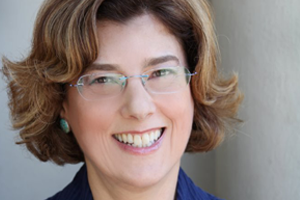Join us for the “Theory and Wellness” presentation which features University of Arizona faculty from multiple disciplines as they explore three theoretical approaches to health. Panelists will discuss topics such as “Bodies of Evidence” and “Politics of Environmental Health”, and “Unsettled Conceptions of Heart Health.” This panel addresses a critique on the current medical approach of placing patients into categories of identity (e.g., women, African American, the elderly), and how re-thinking this categorization can offer a new way of understanding how people become sick. Also, it will investigate environmental remediation and how this strategy has implications for both our health and environment. Lastly, end-of-life decisions will be examined and how they are complicated both practically and ethically by the use of implanted medical devices such as pacemakers and artificial hearts.
• Bodies of Evidence: Locating the Missing Body in Health Disparities Research | Monica Casper
Health disparities research is a growth field, with interest from scholars in public health, sociology, psychology, anthropology, medicine, urban studies, and more. The work enables us to measure and track relationships between social inequality and health status, and resulting data can be useful for policymakers, clinicians, and health advocates. And yet, despite the locus of health and illness in the body, bodies and embodiment are seldom theorized—much less present—in health disparity studies. Too often, people are reduced to categories of identity (e.g., women, African American, the elderly, the poor), in ways that elide the complexities of embodiment and its varied structural locations. I explore the ways that bringing the body into health disparities research can reshape what we know about inequality and health. I suggest that embodying health disparities research offers a different interpretive angle on why and how people become sick and die. At the same time, and perhaps more radically, theorizing the body/embodiment within health disparities research has the potential to change how unequal lives and deaths are conceptualized and addressed.
• Remediation: Pharmikons and the Politics of Environmental Health | Lee Medovoi
This talk investigates the highly ambiguous phenomenon of environmental remediation, which has become a key corporate strategy for managing the implications of damage to both populations and environments. Using Jacques Derrida’s reading of the Pharmikon, as well as Richard Grusin and Jay Bolton’s media studies analysis of “remediation,” I suggest that, especially in the Global South, there is a toxifying as well as a curative thrust to promises of “environmental remediation” that deserves consideration in the field of ecocriticism. To elaborate on the significance of this analysis for contemporary literary studies, I discuss the representation of petro-violence and environmental damage in Halon Habila's novel Oil on Water.
• Unsettled Conceptions of Heart Health: Implanted Medical Devices and Treatment Decisions at the End of Life | Michael Gill
It is becoming increasingly common to treat heart disease by surgically implanting durable circulatory support devices, such as pacemakers, implantable cardioverter-defibrillators, left ventricular assist devices, and total artificial hearts. These devices have produced the obvious great benefit of prolonging the lives of patients. But they have also raised a new question about end-of-life care: if competent patients request that physicians participate in the deactivation of these devices, should physicians always comply? Several studies have revealed that patients and physicians have unsettled attitudes towards this question. This unsettledness contrasts with attitudes toward the cessation of other life-prolonging treatments. There is virtually no controversy nowadays about the legitimacy of physician participation in the discontinuation of artificial nutrition and hydration or the use of a ventilator, virtually no questioning of a competent patient’s right for physician care upon the termination of dialysis or chemotherapy. What explains the comparatively unsettled attitudes toward implanted circulatory devices? I explore this question and try to show that it arises because of changes new medical technologies have wrought on our conceptions of health and treatment.


 Can stress make you sick? Can belief help healing? Do the place and space around you affect your emotions and health? These are the questions that Dr. Sternberg explores in her books “Healing Spaces: The Science of Place and Well-being” and The Balance Within: The Science Connecting Health and Emotions. In her lecture, Dr. Sternberg will answer these questions and will address how the science of the mind-body connection explains these phenomena. She will take the mind-body connection beyond the skin, beyond the biopsychosocial model of health and discuss how the physical environment, through each of the senses, can affect emotions negatively or positively, by triggering the brain’s stress or relaxation responses. These in turn explain how place and space can either help healing or potentially harm health. Dr. Sternberg will review the many connections between the brain and the immune system, which underlie these effects. Understanding these concepts will help health and design professionals incorporate health and wellbeing outcomes in the design of the built environment, including offices, schools, healthcare facilities, homes, and the urban environment.
Can stress make you sick? Can belief help healing? Do the place and space around you affect your emotions and health? These are the questions that Dr. Sternberg explores in her books “Healing Spaces: The Science of Place and Well-being” and The Balance Within: The Science Connecting Health and Emotions. In her lecture, Dr. Sternberg will answer these questions and will address how the science of the mind-body connection explains these phenomena. She will take the mind-body connection beyond the skin, beyond the biopsychosocial model of health and discuss how the physical environment, through each of the senses, can affect emotions negatively or positively, by triggering the brain’s stress or relaxation responses. These in turn explain how place and space can either help healing or potentially harm health. Dr. Sternberg will review the many connections between the brain and the immune system, which underlie these effects. Understanding these concepts will help health and design professionals incorporate health and wellbeing outcomes in the design of the built environment, including offices, schools, healthcare facilities, homes, and the urban environment.